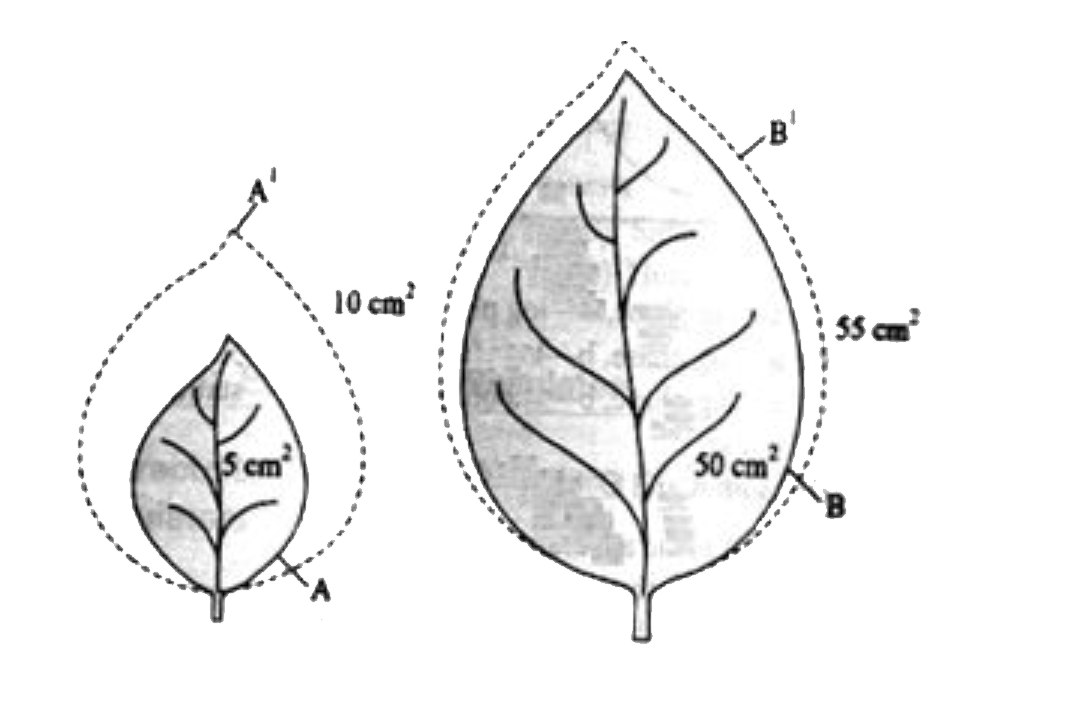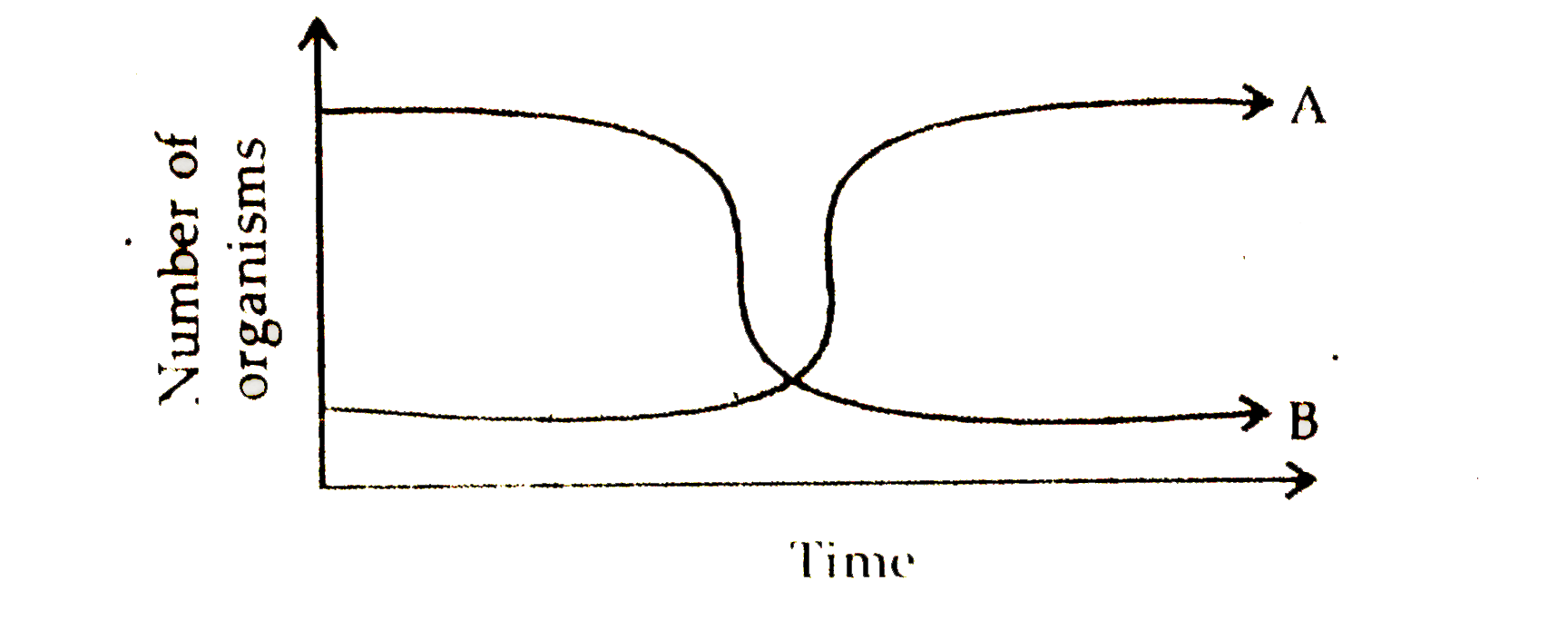Fill in the blanks
Qualitative comparisons between the growth of the living system can be in two ways:
(i) Measurement and the comparison of total growth per unit time is called the ..a…growth rate.
(ii) The growth of the given system per unit time expressed on a common basis, eg. per unit initial parameter is called...b.... growth rate
a - absolute , b - relative
a - relative , b - absolute
a - arithmetic , b - geometric
a - geometric , b - arithmetic
The correct Answer is:A
To solve the question, we need to fill in the blanks regarding the types of growth rates in living systems.
1. Understanding the first blank (a):
- The question states, "Measurement and the comparison of total growth per unit time is called the ___ growth rate."
- This refers to the total amount of growth observed over a specific period. The term that fits here is "absolute."
- Therefore, we fill in the first blank with "absolute."
2. Understanding the second blank (b):
- The question continues, "The growth of the given system per unit time expressed on a common basis, e.g., per unit initial parameter is called ___ growth rate."
- This describes a growth rate that is normalized to a specific parameter, allowing for comparison across different systems. The term that fits here is "relative."
- Therefore, we fill in the second blank with "relative."
Putting it all together, we can complete the statement as follows:
Qualitative comparisons between the growth of living systems can be in two ways:
(i) Measurement and the comparison of total growth per unit time is called the absolute growth rate.
(ii) The growth of the given system per unit time expressed on a common basis, e.g., per unit initial parameter is called relative growth rate.
Final Answers:
a) absolute
b) relative
- The question states, "Measurement and the comparison of total growth per unit time is called the ___ growth rate."
- This refers to the total amount of growth observed over a specific period. The term that fits here is "absolute."
- Therefore, we fill in the first blank with "absolute."
- The question continues, "The growth of the given system per unit time expressed on a common basis, e.g., per unit initial parameter is called ___ growth rate."
- This describes a growth rate that is normalized to a specific parameter, allowing for comparison across different systems. The term that fits here is "relative."
- Therefore, we fill in the second blank with "relative."
(i) Measurement and the comparison of total growth per unit time is called the absolute growth rate.
(ii) The growth of the given system per unit time expressed on a common basis, e.g., per unit initial parameter is called relative growth rate.
a) absolute
b) relative
Similar Questions
The growth of the given system per unit time expressed on a common basis , per unit initial parameter is called .
View SolutionMeasurement and the comparison of total growth per unit time is known as
View SolutionWhat are the two ways by which quantitative comparision between the growth of living system can be made?
View SolutionCells fo which phase attain maximum size of terms of wall thickning growth per unit time is termed as
View SolutionTwo levels , A and B of different sizes but shown absolute increase in the unit time to given leaves A1andB1 Find out the absolute growth and relative growth rate of both the leaves.

View SolutionLe Chatelier's Principle
If a system at equilibrium is subjected to a change of any one of the factors such as concentration, pressure or temperature, the system adjusts itself in such a way as to nullify the effect of that change.
Change of pressure : If a system consists of gases, then the concentration of all the components can be alterd by changing the pressure. To increase the pressure on the system,the volume has to be decreased proportionally. The total number of mols per unit volume will now be more and the equilibrium will shift in the direction in which there is a decrease in number of moles i,e. towards the direction in which there can be decrease in pressure.
Effect of pressure on melting point : There are two types of solids:
(a) Solids whose volume decreases on melting e.g., ice,diamond carborundum magnesium nitride and quratz.
Solids (higher volume)⇔Liquid (lower volume) The process of melting is facilitated at high pressure, thus, melting point is lowerd.
(b) Solids whose volume increase on melting e.g.,Fe,Cu,Ag,Au,etc.
Solid (lower volume)⇔ Liquid (higher volume) In this case the process of melting become difficult at high pressure, thus melting point becomes high.
(c) Solubility of substances : When solid substances are dissolved in water, either heat is evolved (exothermic) or heat is absorbed (endothermic).
KCI+aq⇔KCI(aq)−heat
In such cases, solubility increase with increase in temperature. Consider the case of KOH, when this is dissolved,heat is evolved.
KOH+aq⇔KOH(aq)+heat
In such cases, solubility decrease with increase in temperature.
(d) Solubility of gases in liquids : When a gas dissolves in liquid,there is decrease in volume. Thus increase of pressure will favour the dissolution of gas in liquid.
A gas 'X' when dissolved in water,heat is evolved. Then solubility of 'X' will increase:
View SolutionLe Chatelier's Principle
If a system at equilibrium is subjected to a change of any one of the factors such as concentration, pressure or temperature, the system adjusts itself in such a way as to nullify the effect of that change.
Change of pressure : If a system consists of gases, then the concentration of all the components can be alterd by changing the pressure. To increase the pressure on the system,the volume has to be decreased proportionally. The total number of mols per unit volume will now be more and the equilibrium will shift in the direction in which there is a decrease in number of moles i,e. towards the direction in which there can be decrease in pressure.
Effect of pressure on melting point : There are two types of solids:
(a) Solids whose volume decreases on melting e.g., ice,diamond carborundum magnesium nitride and quratz.
Solids (higher volume)⇔Liquid (lower volume) The process of melting is facilitated at high pressure, thus, melting point is lowerd.
(b) Solids whose volume increase on melting e.g.,Fe,Cu,Ag,Au,etc.
Solid (lower volume)⇔ Liquid (higher volume) In this case the process of melting become difficult at high pressure, thus melting point becomes high.
(c) Solubility of substances : When solid substances are dissolved in water, either heat is evolved (exothermic) or heat is absorbed (endothermic).
KCI+aq⇔KCI(aq)−heat
In such cases, solubility increase with increase in temperature. Consider the case of KOH, when this is dissolved,heat is evolved.
KOH+aq⇔KOH(aq)+heat
In such cases, solubility decrease with increase in temperature.
(d) Solubility of gases in liquids : When a gas dissolves in liquid,there is decrease in volume. Thus increase of pressure will favour the dissolution of gas in liquid.
Au(s)⇔Au(l)
Above equsilibrium is favoured at :
View SolutionTwo types to aquatic organisms in a lake show specific growth patterns as shown below, in a brief period of time. The lake is adjacent to an agricultural land extensively with fertilisers.
Answer the question based on the facts given above :

(i) Name the organisms depicting the patterns A and B.
(ii) State the reason for the growth pattern seen in A.
(iii) Write the effects of the growth patterns seen above.
View SolutionTwo types to aquatic organisms in a lake show specific growth patterns as shown below, in a brief period of time. The lake is adjacent to an agricultural land extensively with fertilizers.
Answer the question based on the facts given above :

(i) Name the organisms depicting the patterns A and B.
(ii) State the reason for the growth pattern seen in A.
(iii) Write the effects of the growth patterns seen above.
View SolutionRead the given statements and select the correct option.
(i) One marize root cell can give rise to more than 17,500 cells.
(ii) A cell in watermelon can increase in size upto 3,50,000 times.
(iii) The growth of pollen tube is measured in terms of length.
(iv) The growth of the leaf is measured in term of surface area.
View Solution